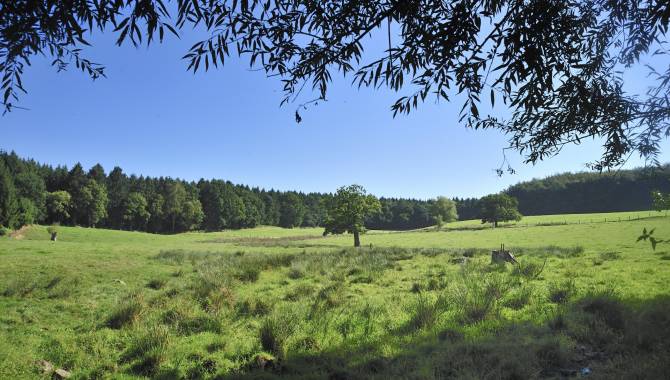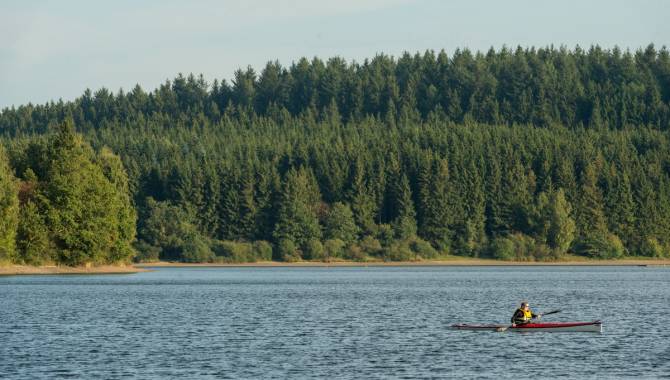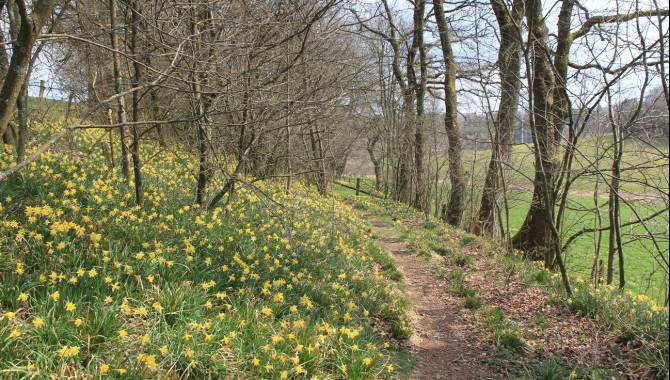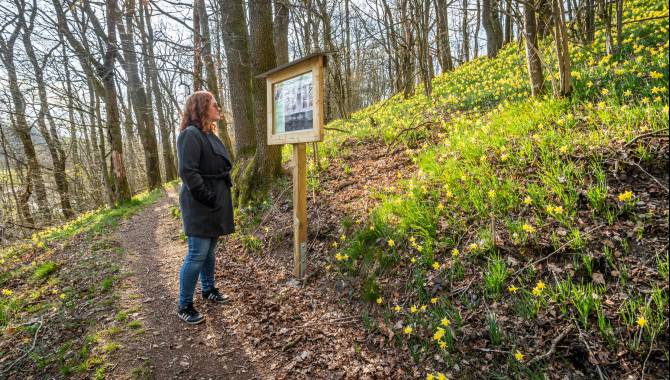The spring is a time of awakening, for the plants and trees, the animals and also for us humans. The days get longer, the temperatures rise and the countryside in the High Fens and the Eifel-Ardennes region of Belgium takes on a new appearance.
The magnificent and unique wild daffodils, which turn many fields at the foot of the High Fens into a veritable sea of blossoms in April, are well known far beyond the national borders. Would it not be a remarkable experience to observe this spectacle of nature at close hand? Many nature organisations offer guided hiking tours at this time of the year leading through verdant meadows and fields and past gaily burbling streams, enabling ramblers to really unwind and breathe freely.
Fields of daffodils in East Belgium
Each spring, a well known magnet of the conservation areas and damp meadows in East Belgium unfurls its irresistible power: yellow daffodils (Narcissus pseudonarcissus) turn the creek valleys into a sea of blossoms. In the Eifel-Ardennes region, at the edges of the High Fens and in the valleys of the Warche and Holzwarche rivers, hundreds of thousands of wild yellow daffodils come into bloom from the middle of April in one of the last but also largest occurrences in Central Europe. Since this miracle of nature only lasts a few weeks and very much depends on the climate, make sure not to miss the right time to come and see this glorious sight for yourself!
Where do daffodils bloom?
One of the last and most significant refuges of the wild yellow daffodil is to be found in the creek valleys of the conservation area of the Holzwarche, between the villages of Rocherath and Mürringen, where a remarkable spectacle of nature with over ten million blossoms can be marvelled at each year between April and May. The blossoms can also be found at the edge of the High Fens and in the region of Kelmis.
The distribution area of the wild daffodil was originally in the western part of Central Europe. It is mainly to be found in natural landscapes influenced by the Atlantic with high levels of precipitation. Its natural habitat is in damp meadows which are deficient in lime and poor in nutrients.
What are narcissi?
Most people know narcissi in the form of daffodils from the front garden or as cut flowers on sale in retail stores. The sight afforded by the yellow blossoms of the wild-growing species when they turn the creek valleys into an enchanted wonderland is almost unimaginable. As a wild plant, the narcissus population is heavily endangered and thus strictly protected. The wild yellow daffodil belongs to the amaryllis family. It is smaller than the daffodil from the town park. Its striking features are its six yellow petals with the trumpet in the centre. The dark green leaves are hard and pointed, thereby enabling them to break through the ground in the spring, even when it is hard and frozen. The large seeds of the wild daffodil are disseminated by water and by ants.
Where and when do these daffodils bloom?
The wild yellow daffodil usually blooms between early April and early May. For decades, the meadow areas in the damp meadows were used for making hay. In order to fertilise the meadows each year, farmers would lay out ditches known as “Flüxgraben” parallel to the slope and irrigate the areas with stream water containing suspended matter. By doing so, damp meadows and bogs rich in flowers thrived with spignel and yellow daffodils. With the advent of artificial fertiliser after the Second World War, the tilling of these areas of the meadows was no longer profitable. The creek valleys were afforested with spruce trees or used intensively as pasture land. The dark spruce forests left no habitat for the wild yellow daffodils. A conservation area was designated in 1978 in order to protect the creek valleys around the Holzwarche. In the 1980s, the association for ecological conservation endeavoured to give the narcissus back its habitat by means of renaturalisation. Spruces were cut down in the valleys to enable the diversity of species to increase once again.
Are wild daffodils protected?
The main threat to the wild daffodil is posed by intensive forms of land utilisation. In this case, even a natural development of these areas would mean an endangerment to the species. Scrub encroachment and the growth of woodland would cause the daffodils to vanish. Just like orchid meadows and meadows of a similar nature, daffodil meadows require regular cutting at certain times of the year – between late July and early August – otherwise they are also threatened by sprawling shrubs and woody plants.
Guided hiking tours
The association for ecological conservation Natagora/BNVS offers guided hiking tours and a daffodil festival. Additional guided hiking tours are available in the Naturparkzentrum Botrange and the Naturzentrum Haus Ternell.
Important: When the wild daffodils are in bloom, please ensure that you only walk in the designated areas. The plants and subsequent guests will thank you for it. The daffodils are under conservation. They must not be picked or pulled out of the ground together with the bulb. For this reason, they should be allowed to remain in their natural surroundings where they are shown to their best advantage.



















